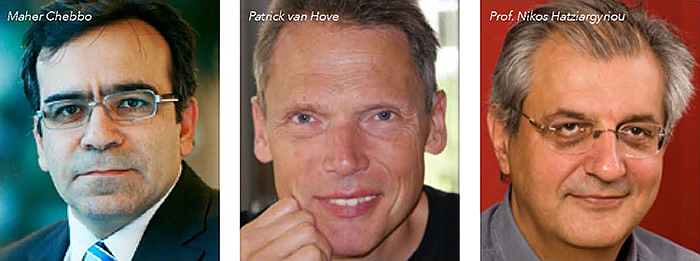
With the 2020 energy climate package and the 2050 energy roadmap, Europe has engaged early in the transformation of its energy system. The EU's "Energy Union" strategy and the recent CoP 21 strengthen the energy policy axes of security of supply, sustainability and competitiveness, together with the need to invest in research and innovation to embrace the necessary changes. Digital technologies will be an essential ingredient of the 21st Century low-emission energy system, and will support the new panorama of the serviceoriented energy responding to new expectations of customers, with many new players and new roles for existing players. Digital technologies are also stressed in the EC's Digital Single Market strategy.
Digital technologies have reshaped the customer views on the services and interactions they will expect from "public" service providers such as health, transport, energy, administration. In the energy sector, customers of the 21st Century will likely expect beyond products, highquality, personalized services that are accessible 24/7 also through mobile and/or social media. The wide roll-out of smart meters and of related technologies in Europe will lead to massive amounts of data and information that will support the development of such services, while respecting privacy.
The energy sector has embraced digital technologies for a long time in the context of technical applications such as simulation, modelling for product design, monitoring, control, planning, markets, forecasting, etc. This has allowed the industry to improve the quality of service and to reduce costs. Many of these applications were developed over the years as best solutions for particular problems and are often isolated in silo based applications and data.
The energy sector is now embracing the major change linked with the transition to a low-emission future, and is faced with a wide range of major issues. The supply and balance of the system will no longer rely on large dispatchable power stations, but rather on variable renewable sources that need to be balanced with a combination of distributed generation, demand response, storage and interconnections. The system will become much more decentralised with a multiplication of millions of distributed energy sources and active consumers, many of them connected to distribution grids. Customers will increasingly become active and will manage themselves a combination of generation, use and storage; new use patterns will come from electric vehicles and electric heating; customers will organize themselves in energy communities. New stakeholders such as aggregators and energy service providers will take increasing roles while new ones will be required from existing players.
The further digitalisation of the energy system will increasingly break the barriers:
- - among silo applications and silo data sets; building synergies between the “back-office” technical data, information and applications, and the “front-end” link with the customer.
- - among business processes; improving the ability to embrace change and facilitate information exchange and service composition among players.
Recently integrated smart grids standards and architecture model will enable the development of open interoperable solutions to implement innovations.
Learning from other industry transformation cycles, the energy digital transformation will go through the same disruptive journey making the status quo not anymore an option. Digital energy transformation will help system operators making rational decisions and in the same time customers getting every day benefits and value added services.
The stakeholders of the SmartGrids European Technology Platform have created a Digital Energy task force with the objective to identify new services that could emerge in this context and develop use cases and benefits of the digital transformation of the energy system. The results will be summarized in a white paper in April 2016 addressing policy makers. Hereafter the main use cases identified are summarised in the table below.
To implement the listed use cases, top 3 decision imperatives are needed to transform the energy sector:
- Building new business models by re-imagining the end to end business processes and the customer centricity,
- Considering IT as the platform for growth and innovation,
- Enabling the digital disruption across the value chain with a deployment of high security standards.
The digital energy journey starts now! All the energy stakeholders, operators, technology providers and researchers should collaborate jointly to make it happen with the right speed and the right sense of urgency in order to deliver the highest benefits to the European consumers, consumers and citizens.

1 See: www.ev-merge.eu
2 See : www.flexiciency-h2020.eu